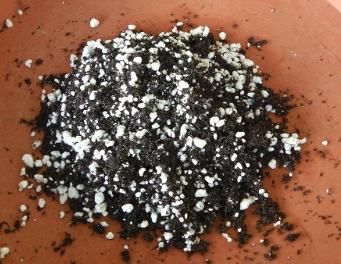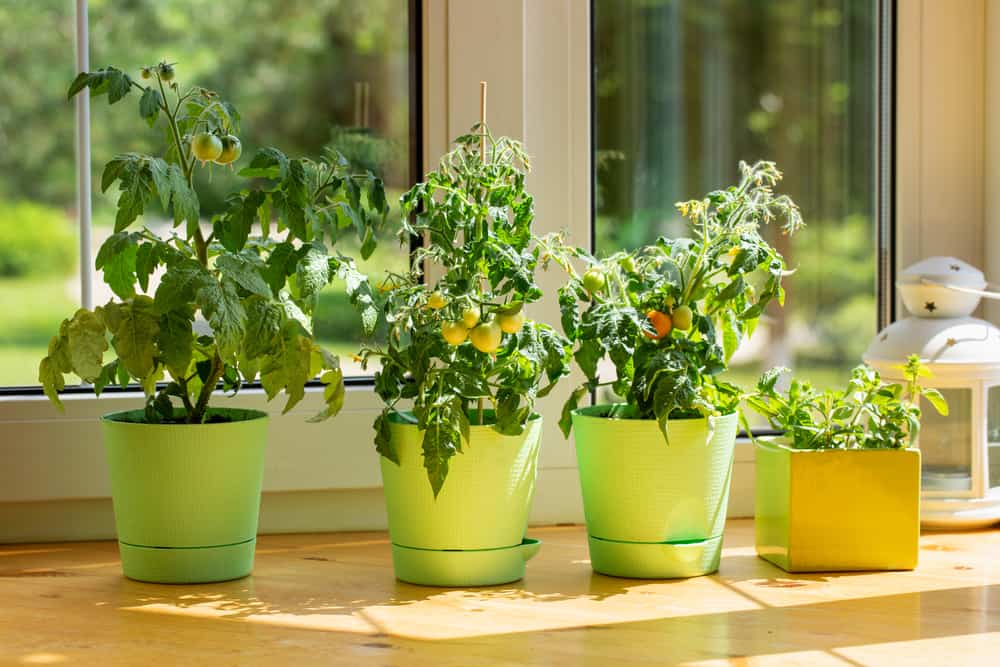Growing fresh tomatoes indoors may seem impossible, but with the right techniques and care it can be easy and rewarding! Windowsill gardening allows anyone, even those without an outdoor garden, to enjoy homegrown tomatoes year-round. Follow these simple steps to grow happy, healthy cherry tomatoes or even full-sized varieties inside your home.
Choosing Your Tomato Variety
When selecting tomato varieties for indoor growing, prioritize dwarf compact types that do well in containers. Cherry tomatoes are always a safe bet since they stay small. Try grape cerise, or mini Roma varieties like Red Robin or Sweet ‘n’ Neat. For full-sized slicing tomatoes, look for”patio” or “pot” in the name, like Patio Princess or Pot Luck. Determinate varieties that stay short also work better than tall indeterminates.
Some of the best varieties for windowsill growing include
- Micro Tom – The world’s tiniest tomato, only 4-5 inches tall!
- Window Box Roma – Mini Roma perfect for containers
- Sweet ‘n’ Neat – Cherry tomato with great sweet flavor
- Tiny Tim – An iconic dwarf tomato variety, just 10-12 inches tall
- Salad Cocktail – Prolific producer of red and yellow cherry tomatoes
Starting Seeds Indoors
Tomato seeds can be started indoors 6-8 weeks before the desired harvest. Sow seeds 1⁄4 inch deep in seed starting mix or potting soil, water gently, and place in a warm spot with plenty of light. A seedling heat mat can provide the ideal soil temperature of 80-90°F. Once sprouted, move to the sunniest window in your home. Add grow lights to provide at least 6 hours of daily sunlight.
When the seedlings have 2-4 true leaves, transplant each one into a 3-4 inch pot filled with potting mix. Let them grow until the roots fill the pot before transplanting into a larger container. Hardening off is not necessary since they will stay indoors.
Choosing Containers and Soil
For windowsill gardening, use the largest container possible, at least 6 inches deep. This gives tomatoes adequate room for their roots to spread out. Clay, plastic, wood, and ceramic pots all work fine as long as there are drainage holes. Self-watering containers and upside-down planters like Topsy Turvy are also options.
Use quality potting soil, not garden soil, which is too heavy. Mix in compost or worm castings to enrich the soil. Adding slow-release tomato fertilizer at planting provides nutrients for the full season.
Caring for Indoor Tomato Plants
Sunlight, temperature, water, and fertilizer are the keys to keeping indoor tomatoes happy in their pots.
Sunlight: Tomatoes need at least 6 hours of sun per day. South or west-facing windows are ideal. Rotate plants frequently so all sides get sun. Grow lights can supplement natural light, especially in winter.
Temperature: Daytime temps of 70-80°F and nighttime temps above 60°F are best. Keep away from drafty spots. Use a space heater or seedling heat mat if needed.
Water: Check soil moisture daily, watering when the top inch is dry. Add water until it drains from the bottom. A saucer can catch drainage. Avoid overwatering.
Fertilizer: Use soluble tomato fertilizer every 2-3 weeks according to label rates. An occasional compost or fish emulsion feeding provides micronutrients.
Pollinating and Supporting Your Plants
Outdoors, wind and bees spread pollen so tomatoes set fruit. Indoors you need to hand pollinate by gently shaking or tapping tomato blossoms daily. You can also use a small brush or cotton swab to transfer pollen.
As indoor tomatoes grow, tie them loosely to bamboo stakes or tomato cages for support. Prune suckers (small branches between stems and leaves) to keep plants tidy and focused on fruiting. Pinching off the tops once they reach desired height encourages ripening.
Troubleshooting Common Indoor Tomato Problems
Growing tomatoes on the windowsill comes with some challenges. Here are solutions to common issues:
- Leggy growth: Insufficient sunlight, increase hours under grow lights
- Poor fruit set: Lack of pollination, tap blossoms daily
- Leaf spots: Fungal diseases from humidity, improve air circulation
- Wilting: Under or overwatering, check soil and adjust watering
- Slow growth: Low temperatures or inadequate fertilizer, move to warmer area and fertilize
- Whiteflies/aphids: Insect pests, spray with insecticidal soap and remove heavily infested leaves
- Blossom end rot: Irregular watering, maintain consistent moisture
Enjoying the Harvest
Once your indoor tomatoes start ripening, check plants daily for ready-to-pick fruits. Gently twist to remove, leaving stems attached. Cherry types ripen prolifically over a long period. Slicing tomatoes produce over a shorter timeframe.
The sweet taste of homegrown tomatoes in winter is a real treat. Enjoy them fresh in salads and sandwiches, cooked into sauces and soups, or preserved by canning or freezing. With the right care, windowsill gardening can yield a mini tomato harvest for months of indoor enjoyment!
When to Sow Seeds for Windowsill Varieties
Because windowsill tomatoes are going to spend their entire time indoors, the seed sowing period is wider. This means that you can plant from the beginning of March to the middle of April and get good weather.
Adding extra light from a grow lamp or even a desk lamp when it’s cloudy outside can help plants grow. However, it is not essential under average conditions.
Choosing The Compost for Windowsill Tomatoes
Compost for container growing can be bought from the garden centre. This is a light fluffy mix that contains vermiculite or perlite that hold both water and air.
Tomato plant roots need moisture, nutrients and oxygen to grow vigorously. Without all three, plants become stunted and under-perform.
Perlite is a great way to improve any container’s soil, and it also helps plant roots stay healthy. It can be bought separately from most garden stores.

Growing Cherry Tomatoes On The Windowsill
FAQ
Can you put tomatoes on windowsill?
Can you grow tomatoes year round indoors?
What is the best system to grow tomatoes indoors?
How do you grow windowsill Tomatoes?
There are a number of varieties around that have been specifically bred as windowsill tomatoes. Here are some of the things you’ll need to proceed. A sunny windowsill – tomatoes need a lot of light. A tomato variety that will grow well in a 6 inch pot. Compost that is suitable for a pot. The plant needs to be watered and fed correctly.
How to grow tomatoes indoors?
Windowsill tomatoes are the easiest and most economical way to grow enjoy fresh tomatoes indoors all winter long. 1. Choose tomato varieties that have a reputation for growing well indoors. 2. Start seeds 10-12 weeks before you want to harvest tomatoes indoors. For example, plant seeds in August to begin picking tomatoes in December. 3.
Can tomatoes grow in a window?
Since tomatoes love UV rays, this is an excellent way to grow them. An indoor window keeps your plants out of the cold and provides tomatoes with the hours of direct light they need per day. Note that in a window there won’t be bees to pollinate your plant.
When should you plant windowsill Tomatoes?
However, they are all great tasting tomatoes that will bring a lot of fun and interest – a good talking point for visitors! Because windowsill tomatoes are going to spend their entire time indoors, the seed sowing period is wider. In other words, you can sow at the beginning of March right through to the middle of April and expect good results.
- The Ultimate Guide to Growing Strawberries in Raised Beds - August 8, 2025
- No-Dig Garden Beds: The Easiest Way to Grow a Beautiful Garden - August 6, 2025
- How to Protect and Preserve Wood for Raised Garden Beds - August 6, 2025

